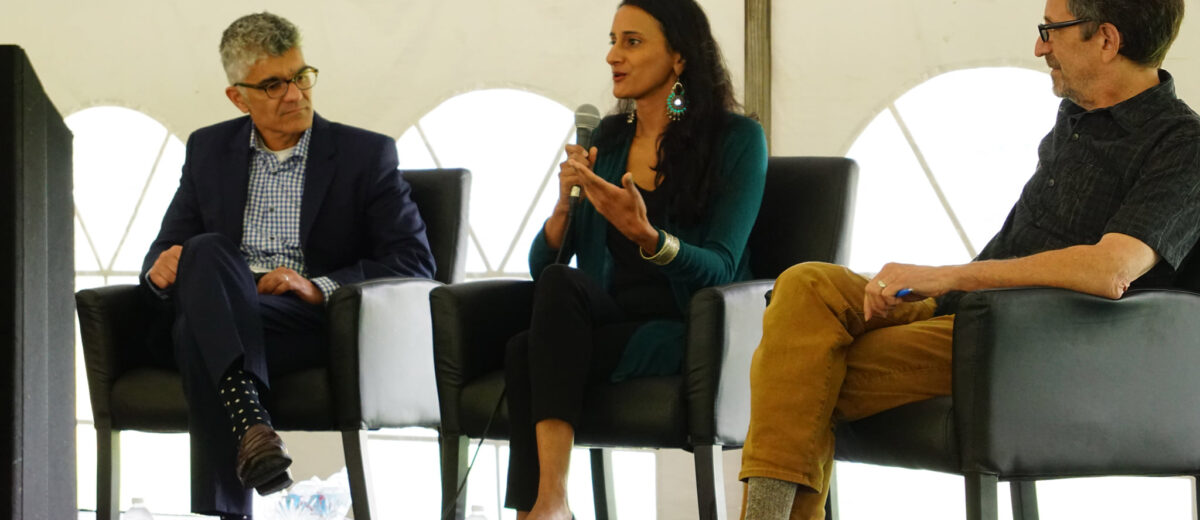by Catherine Schmitt
The pace of global change wrought by increasing concentrations of carbon dioxide in the atmosphere continues to accelerate. Change is so rapid that the past is no longer a reliable guide. This is a problem for the National Park Service, which is charged with preserving public lands unimpaired, and ensuring their enjoyment for future generations.
National parks also present an ideal setting to witness, document, and respond to the impacts of climate change. This is the work of scientists. But, as a panel of people with experience in communication and engagement recently discussed here at Schoodic Institute as part of the inaugural Goldstein Lecture, this is also the work of everyone.
“We rely on past experience when we imagine the future. But the future is not going to be the same. How do we think about future generations?” said Bina Venkataraman. “We have to use imaginative empathy.”
This empathy comes from listening to others. Andrew Revkin, who has reported on climate change science since 1988, eventually learned that if he allowed people to tell their own stories and listened enough, a shared concern would emerge (such as a desire to be energy independent), and with it potential solutions to the problem of climate change.
For national parks, the voices of youth are especially important. Young people represent the “imagination gap,” said Venkataraman. “New generations will make their own meaning from parks.” In her book The Optimist’s Telescope, she describes parks as being like heirlooms, passed down through families, taking on new meaning with each inheritance. “We have to think of ourselves as ancestors, and it is our role as ancestors to preserve their options,” she said.
This might be a way to think about the parks’ “preserve unimpaired” mission – not as protecting scenery from some moment in the past, but as preserving a range of possible futures. Some might call this “resilience,” but for Revkin, preserving options means preserving wildness—the inherent ability and freedom of plants and animals and ecosystems to evolve and adapt. Like keeping a family treasure in good working order.
Humans, too, need to allow our expectations of change to evolve, said Raj Pandya. Because even when it comes to an uncertain future, people tend to want certainty. But the best scientists and science communicators can do is present ranges, of temperature increase, sea level rise, precipitation frequency. To keep expectations flexible requires the kind of imagination Venkataraman promotes. It also requires agency.
In his work with the American Geophysical Union’s Thriving Earth Exchange, Pandya creates capacity for people to speak for themselves and do their own science. And he believes that science—the ability to practice it as a way of knowing—should be a human right. However, he said, “science is necessary, but not sufficient.”
Science is an approach to learning about the world. But science and the language of science limit our ability to see what is varied, said Venkataraman—to imagine all the options, so that we may preserve them. There are other ways: story, art, experience.
Parks are a setting for the science of climate change. They are also a place where nature and people have agency to create and share their own stories, listen to others, imagine the future, and work together towards a better tomorrow. This may just be a critical and emerging meaning for parks and part of what we are preserving unimpaired for the next generation.
